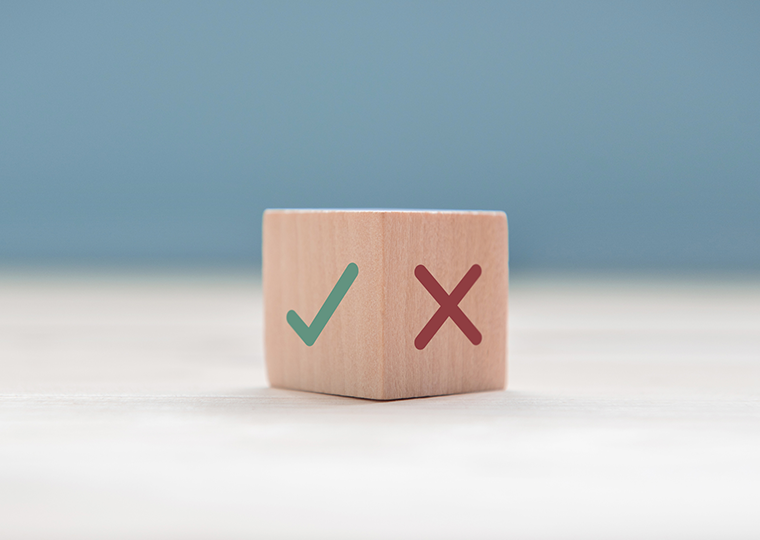Laws that threaten ideological preferences prompt some opponents to adopt more extreme beliefs
In the 1960s, commentators used “backlash” to describe the reaction of Southern whites to new civil rights laws. Since then, all sorts of social policies — equal rights for women, gay marriage and masking mandates during the COVID-19 pandemic — have prompted a backlash.
The term most commonly refers to opposition by conservatives to liberal social changes. A working paper suggests that it’s social legislation, not change in general, that’s responsible for such a reaction, and that both sides of the political spectrum can express it when laws threaten their ideological identities.
Opt In to the Review Monthly Email Update.
Does Social Legislation Change Public Attitudes?
The paper, by UCLA Anderson’s Brian Wheaton, offers a framework for assessing how social policy legislation affects public beliefs and attitudes. When a law threatens ideological preferences, the paper suggests, people will move in the opposite direction and express their views even more strongly. This opposition, if powerful enough, can overwhelm the goals the law aims to achieve.
“Social policy laws, be they liberal or conservative, may consistently be accompanied by an additional and nontrivial cost,” Wheaton writes.
He analyzes how male attitudes toward gender equality were affected by adoption in the 1970s of state constitutional amendments granting women equal rights. He found that the amendments led to a sharp drop in men’s belief in the equality of women — a trend that translated into a strong increase in support for the Republican Party.
What’s Behind the Backlash
Political backlash may be familiar, but the reason for it isn’t obvious. Civil rights laws didn’t take away whites’ ability to vote, and gay marriage doesn’t invalidate heterosexual matrimony. “A straightforward and sensible conjecture would be that, by legislating better conditions or enhanced treatment for a certain group of individuals, public attitudes toward that group would also become more positive,” Wheaton writes.
But clearly something else is at work. That’s because, Wheaton observes, laws don’t just have a functional aspect that demand compliance; they also have an “expressive” component that signals certain standards for acceptable behavior. It’s this feature of social legislation, Wheaton says, that can cause a backlash.
People have ideological preferences — liberal, moderate or conservative — and they want to be surrounded by those who share them. Most notably, they want their children to share their ideology. Laws running counter to their ideology place these goals under threat, so in order to ensure the survival of their ideology, people have an incentive to push back against a law that runs counter to their ideology and to try harder to pass those beliefs along to their children, potentially sending a backlash on to the next generation.
A Look at Equal Rights Amendments Across States
To show this at work, Wheaton considers the reaction to state equal rights amendments in the ’70s. Although efforts to pass an Equal Rights Amendment to the U.S. Constitution ultimately failed to win support from enough states to pass, 15 states adopted their own state ERAs between 1970 and 1976. (Seven other states subsequently adopted ERAs, with Delaware the most recent in 2019.)
The staggered adoption of the state amendments enabled Wheaton to examine how attitudes changed before and after passage and how they compared with those in neighboring states that didn’t approve an ERA. He used data from American National Election Studies, which, beginning in 1972, asked respondents whether their views are closer to “men and women are fundamentally equal” or to “a woman’s place is the home.”
Wheaton found that men’s opinions “sharply and significantly” changed after passage of an ERA in their state. Before passage, about 56% of men held positive attitudes toward gender equality; afterward, that share fell by about 15 percentage points. Women, in contrast, became more likely to believe in gender equality after passage.
The change, it’s worth noting, occurred in the middle of a general increase in positive views toward gender equality. Before passage, favorable attitudes toward equal rights for women were increasing and continued to increase afterward, but at a much lower level for men in ERA states.
“One way of viewing the state ERAs is that they set back belief in gender equality by about a decade or so,” Wheaton says in an email. Wheaton also finds evidence that the backlash is strongest among men with children and is passed on — albeit with reduced strength — to the next generation of young men.
To demonstrate that the law and not some other factor caused the backlash, he considered and ruled out alternative explanations. For example, the well-publicized campaign against the ERA nationally, and in the states, could have caused the shift in attitudes. Instead, he found, men’s views changed significantly more in states that adopted the law than in those where it was on the ballot — with an equally vigorous campaign — but didn’t pass.
All Social Legislation Sees Backlash
Wheaton also sees evidence that every important social legislation since the 1960s created a backlash. For example, attitudes toward Blacks among whites declined immediately following passage of the 1965 Voting Rights Act. (The Saturday Evening Post warned as early as 1957: “You’re going to get a backlash — segregation is going to spread.”)
Backlash also isn’t strictly a conservative phenomenon. In the 1990s and 2000s, many states passed “defense of marriage” laws explicitly outlawing same-sex marriage. Wheaton finds that these laws induced a backlash in favor of gay rights, with an increased fraction of the population in these states expressing approval for gay marriage, adoption by gay couples and gay people in general. Conversely, after the Supreme Court legalized gay marriage nationwide in 2015, Wheaton finds a backlash in opinion against gay rights in states that were compelled by the decision to allow gay marriage.
Many people of varying beliefs, of course, would reject the notion that legislation should be watered down or even abandoned simply because some who disagree will be inflamed by it. To Wheaton, however, the findings suggest that policymakers need to take into account the potential that backlash will counter the benefits of social legislation — and by how much. Wheaton suggests that the degree to which the law contains functional content — as opposed to merely expressive content — is key.
“Will it, like the Civil Rights Acts, generate a strong backlash that nonetheless pales in comparison to the direct, functional benefit of providing a large portion of the citizenry voting rights and the right to equal public accommodation for the first time?” Wheaton writes. “Or will it, like the state ERAs, generate massive backlash that seemingly overwhelms small direct effects?”
Featured Faculty
-
Brian Wheaton
Assistant Professor of Global Economics and Management
About the Research
Wheaton, B. (2022). Laws, Beliefs, and Backlash.






